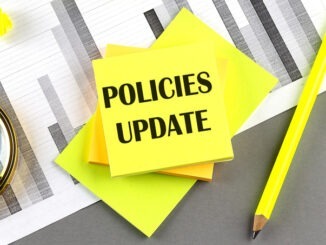
The new Children’s Wellbeing and Schools Bill, also known as the Children’s Wellbeing Bill, encompasses a range of measures aimed at supporting children and families
CREDIT: This is an edited version of an article that originally appeared on Education Hub
Covering areas such as school reform, home education and safeguarding, the bill introduces significant changes designed to enhance education and wellbeing outcomes. These changes are expected to be implemented gradually over 2025 and 2026, meaning that school business leaders will need to stay informed and closely monitor developments. By keeping up to date with the evolving legislation, they can effectively plan for any upcoming changes and ensure their schools are prepared for the adjustments ahead.
Teacher Training
The Department for Education (DfE) acknowledges that high-quality teaching is the most significant factor in a child’s education, equipping them with the knowledge and skills needed for lifelong success. As part of the new bill, all new teachers in state primary and secondary schools will be required to have qualified teacher status (QTS) or be in the process of working towards it. This requirement will take effect from 1st September 2026, providing schools with ample time to prepare for the change.
One Curriculum
An independent review has been commissioned to provide guidance on the curriculum and assessment system for children and young people aged 5 to 19, ensuring it meets the needs of every learner. The Curriculum and Assessment Review is progressing well and is expected to publish its recommendations in autumn 2025. As part of the bill, all state-funded schools, including academies, will be required to teach the national curriculum. This will give parents confidence that their child will benefit from the reformed curriculum, regardless of the type of school they attend.
Teacher Pay
To ensure schools can continue to attract and retain the best teachers, the bill outlines that all teachers, whether in maintained schools or academies, will be part of the same core pay and conditions framework. While most academies already adhere to the existing framework and support this change, the government will first consult the School Teachers’ Review Body to explore potential additional flexibilities within the statutory framework, ensuring it is as effective as possible for all schools. This requirement will come into effect no earlier than September 2026.
Strengthening Safeguarding
Teachers and educators play a crucial role in identifying signs of abuse or neglect, with schools being the second largest referrer of cases into children’s social care last year. However, the law currently does not mandate that all nurseries, schools, or colleges are included in safeguarding arrangements, which can result in missed opportunities to protect children. The new bill aims to improve collaboration between children’s social care, police, health services and education. This will ensure a more coordinated approach to safeguarding and promoting the welfare of all children within local communities.
These are just a few of the proposed changes outlined in the bill. School business leaders should stay informed about all the upcoming reforms, as there will be further details and developments that may directly impact their schools.
For the latest updates and comprehensive information on how these changes will affect school operations, SBLs are encouraged to refer to the government’s official website. By keeping up to date with the full scope of the bill’s provisions, school leaders can better prepare for and adapt to the evolving educational landscape.




Be the first to comment